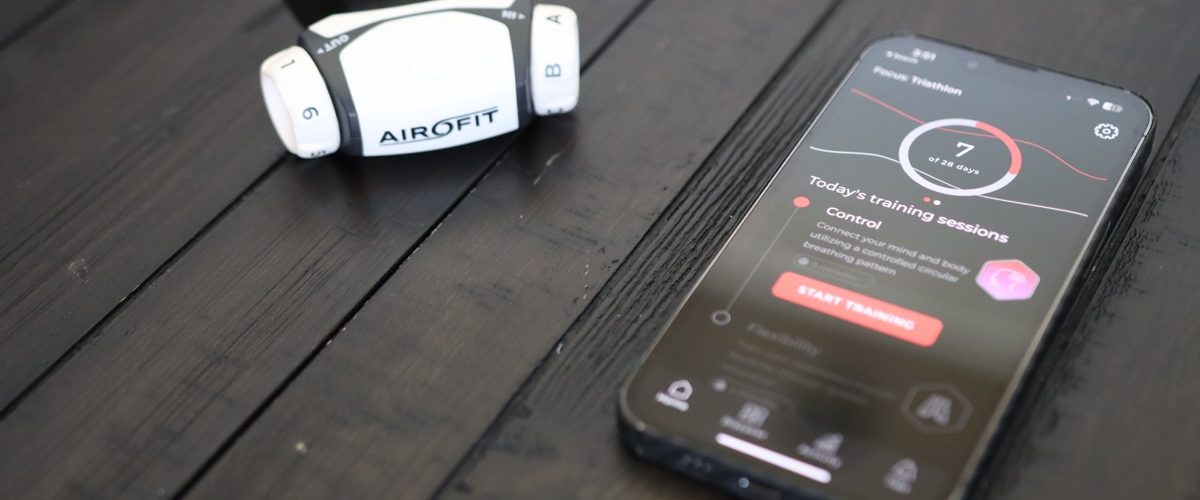Breathing, and more specifically breath training, has long been recognized for its important role in our overall health and mental wellbeing. Just as we focus on enhancing our biceps with targeted weight exercises or sculpting our quads with specific workouts, shouldn’t we also pay attention to our respiratory muscles? An increasing body of evidence supports this idea, underscoring the benefits of improving these crucial muscles.

This is where Airofit Pro 2.0 comes in. This compact device is designed to strengthen and increase the capacity of your respiratory muscles by focusing on breathing against resistance. The Airofit is designed to work with its mobile app that guides your training and keeps track of your progress. I like to think of it much like a fitness tracker designed to track your breathing. Just like my Apple Watch records my running sessions, and provides me with heart rate, pace, cadence, and can guide me through some workouts. Airofit aims to do the same, but in the realm of breath training.
Here’s a fun tidbit for you: Airofit didn’t start out with athletes in mind. Its developer, AMBU, originally designed the device as a therapeutic aid for people suffering from asthma and COPD (Chronic Obstructive Pulmonary Disease).
THE SPECS
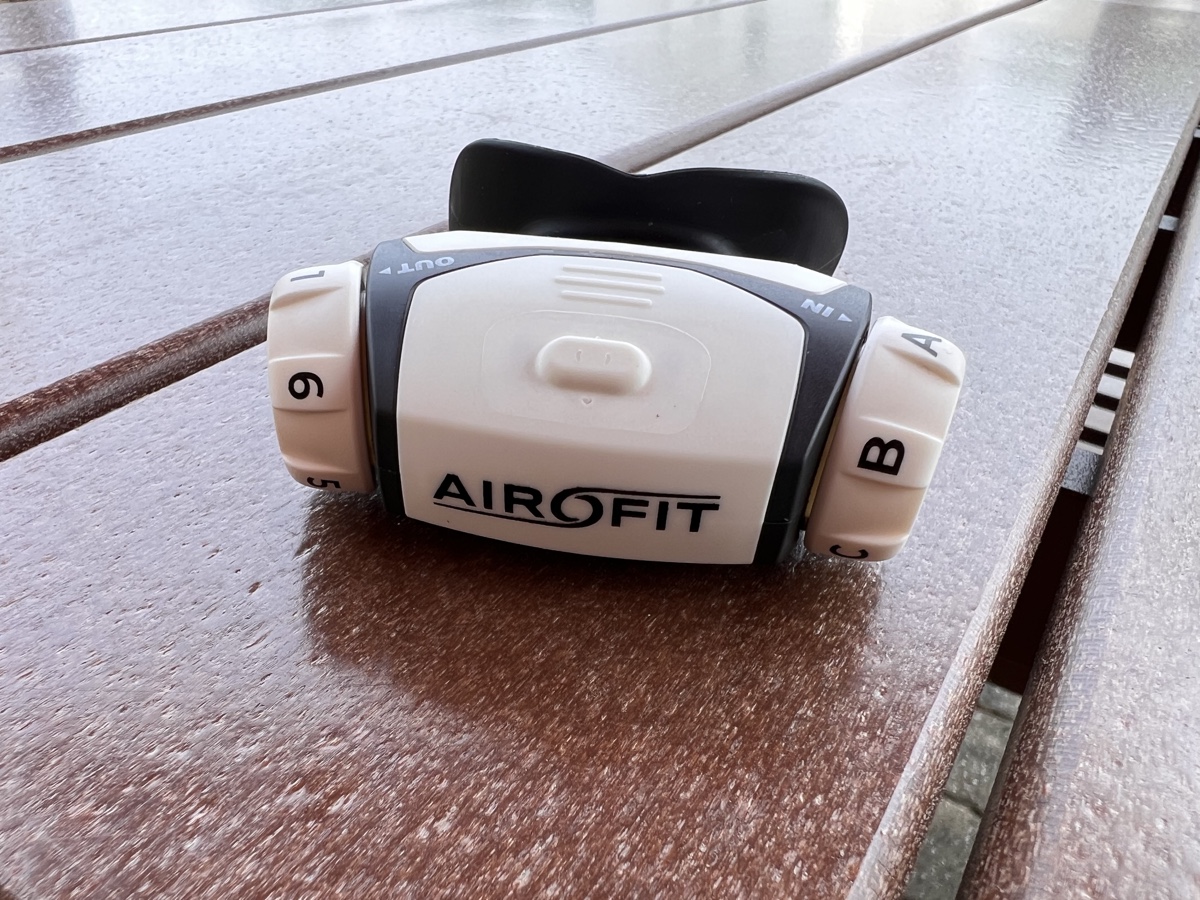
Airofit offers three different models of their device: Airofit Active, Airofit Pro, and the latest one, Airofit Pro 2.0. The one Airofit sent me is the most recent model, the Airofit Pro 2.0, which carries a price tag of $349. If you’re budget-conscious, the Airofit Active is a more affordable option at $129. The Active, is the exact same as the Pro in terms of design, look and feel. The Airofit Active mirrors its Pro counterpart from a design perspective. However, the Active model does not feature Bluetooth connectivity, which means it lacks the ability to provide live feedback during your training sessions or track your progress over time. This aspect of the Active model simplifies the user experience, but it also means you won’t have the same level of insight and analysis that the Bluetooth-enabled Pro models offer.
The Airofit Pro 1.0 is also in the mix, priced at $299. But if you’re already considering the Pro 1.0, I’d recommend investing the extra $50 for the Pro 2.0 version. You’ll get benefits like an extended battery life, convenient magnetic charging, and better water resistance, making it well worth the modest additional cost.

In addition to the cost of the device itself, there’s an additional fee if you want to unlock the premium features within the Airofit app. The subscription fee is set at $7 per month or, if you prefer to pay annually, $40 for the whole year. Now, if you’re not interested in these advanced features or if you’re on a tight budget, don’t worry. You can still use the Airofit Pro for free with the basic features, which is a nice option for those just starting out with breath training or those who want to keep things simple.
Opting for the premium version of the Airofit app opens up a wider array of features. With this version, you’ll have access to 22 focus areas for your training, as opposed to just 2 in the free version. It also provides integration with Apple Health, giving you a access to your HRV and sleep data.
One key advantage of the premium version is the expanded access to advanced metrics such as lung test and capacity. However, perhaps the most significant limitation of the free version lies in your training history. With the free option, you can only review your training history for the past 30 days. On the other hand, the premium subscription offers unlimited access to your training history, which can be essential for tracking long-term progress and patterns in your training.
IN THE BOX

The Airofit package includes the device itself, a mouthpiece, and a magnetic charging cable. The device features two dials on each side, allowing you to adjust the airflow resistance during both inhalation and exhalation.
USING AIROFIT PRO 2.0
Before you start using the Airofit Pro 2.0, you’ll need to charge it. The process is straightforward. You remove the “E-Unit” which is the little plastic piece with the Airofit logo from the main body of the Trainer by squeezing the grips, then attach the magnetic charging cable to it.
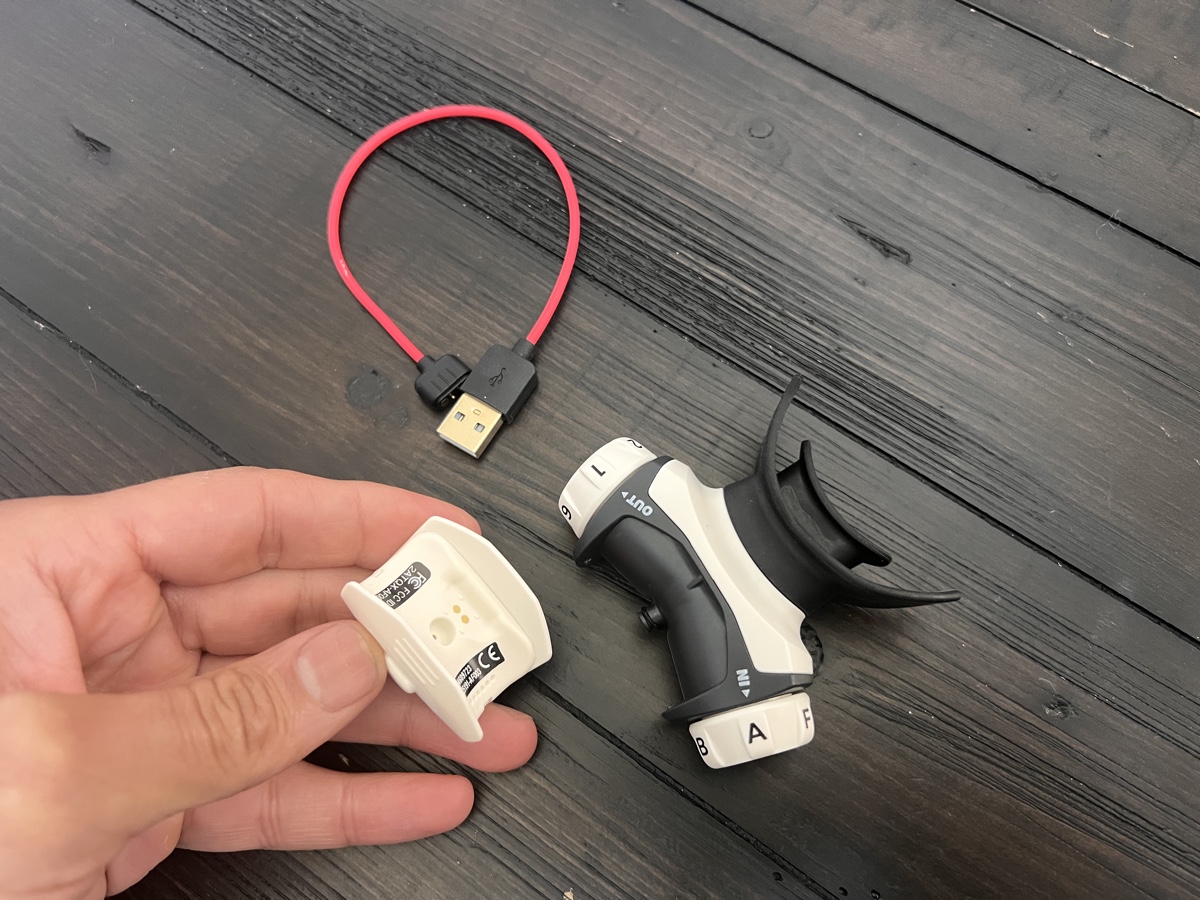
One important note: if you have more than one Airofit Pro 2.0 device, be sure not to mix up the E-Units. Each one is precisely calibrated to its respective device, so swapping them around could lead to inaccuracies in your measurement results.
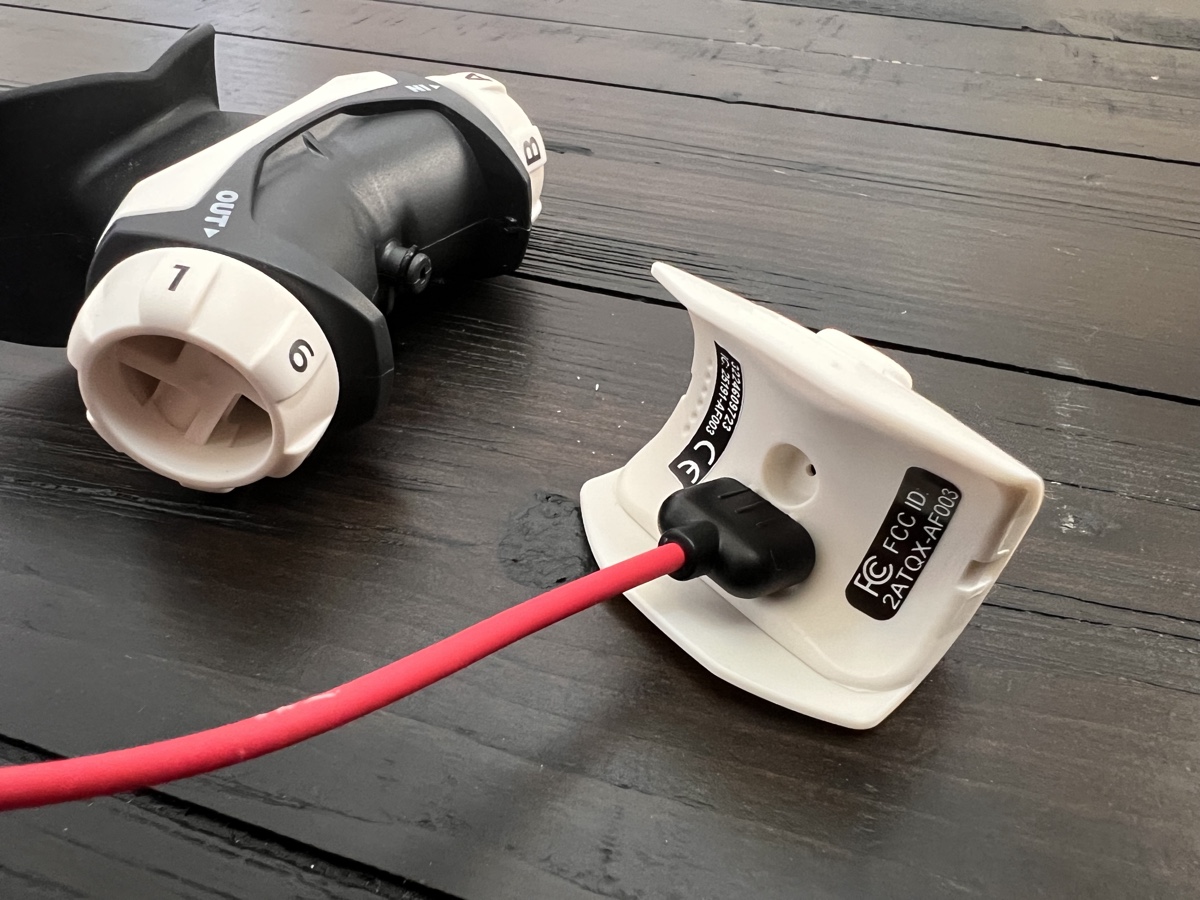
To get started with the Airofit Pro 2.0 Breathing Trainer, you first need to switch it on by pressing the button located on the top of the E-Unit. Once activated, the device will begin to blink. Then, open the Airofit app on your mobile device, which will initiate the pairing process with the Breathing Trainer.
The device requires a brief calibration to zero the pressure measurements. It’s important that you don’t breathe into the Trainer during this process – just wait for the instructions from the app before you begin your respiratory exercise.
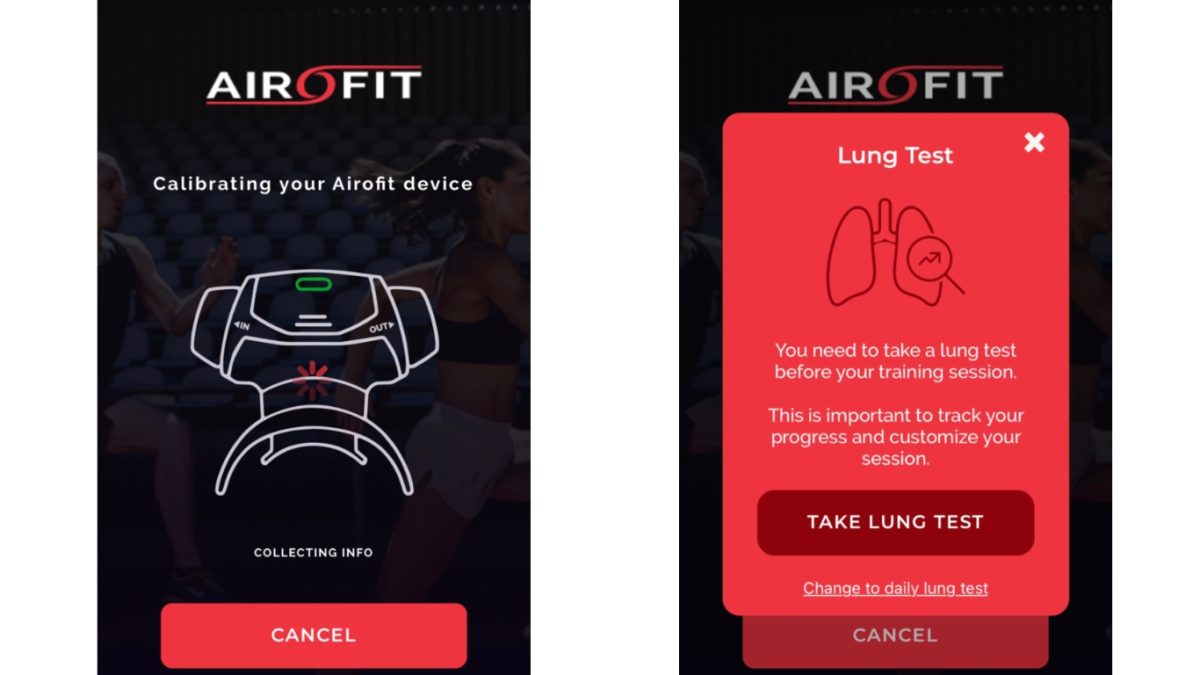
When you’re using the Airofit Pro 2.0 for the first time, the app will guide you to take a lung capacity test. This test helps determine your current respiratory condition, providing a baseline for future comparison. By default, the app will prompt you to take this lung test daily, but you can adjust this to a weekly reminder in the settings according to your preference.
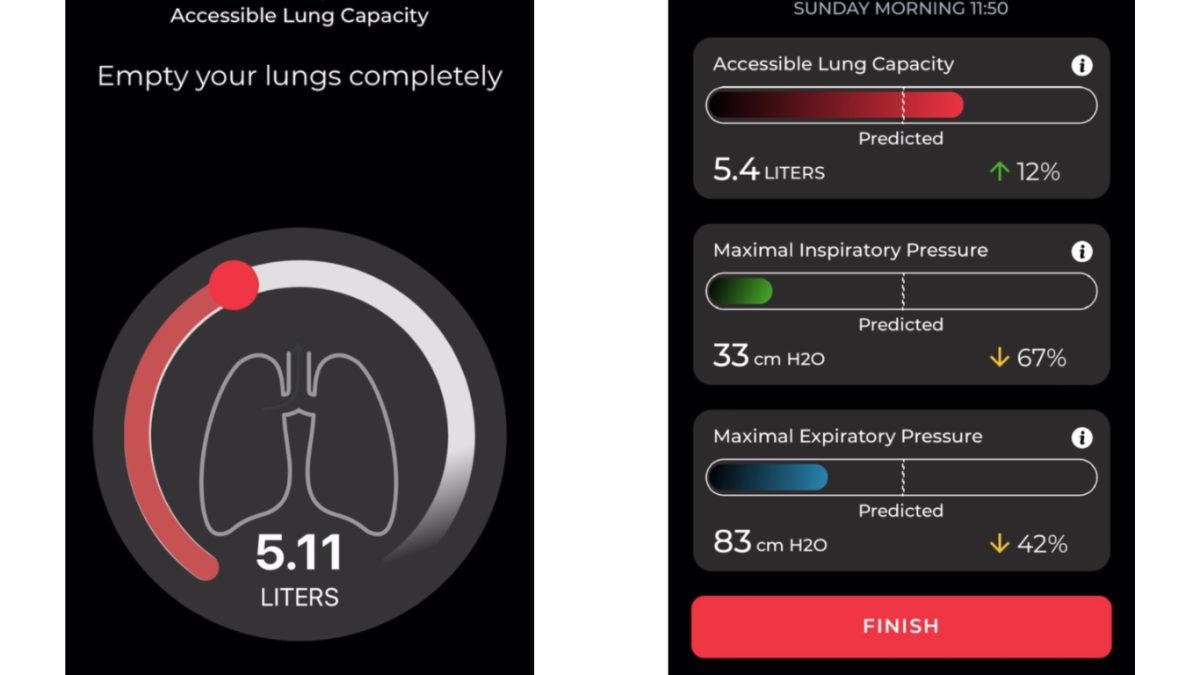
The lung test records your:
- Accessible Lung Capacity, your active lung volume
- Inhale strength, your Maximal Inspiratory Pressure (MIP)
- Exhale strength, your Maximal Expiratory Pressure (MEP)
These measures are evaluated based on your gender, age, and height (as set in your profile). The percentages (0-200%) show how you compare to other users in the same demographic group as you.
Based on the goal selected in the Airofit app, you will find training recommendations within the app. Prepare your trainer by setting the correct resistance levels and follow the app guidance to start the training. When your exercise is finished, the result screen will appear in the app, and you will see a summary of your training.
Your training routine with the Airofit Pro 2.0 will be guided by the goal you’ve selected within the app. Based on this goal, the app will present you with a tailored set of training recommendations.
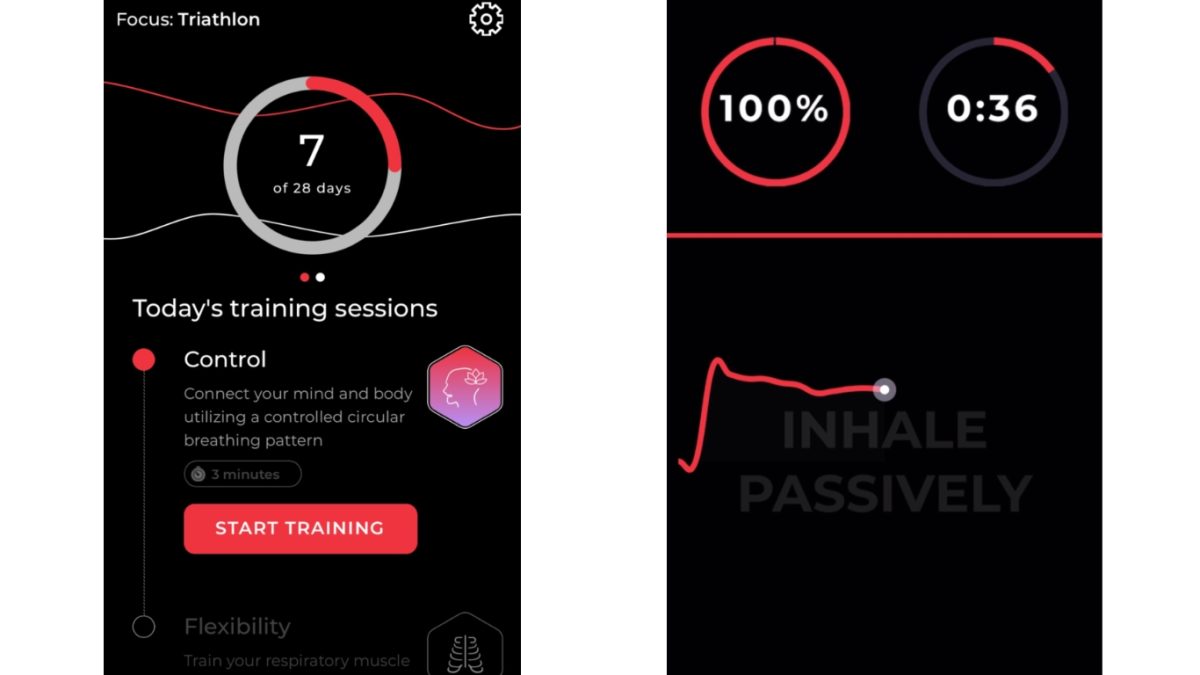
Once you start your training, simply follow the instructions provided by the app. At the end of your exercise session, a result screen will pop up within the app, giving you a summary of your performance during the training. Training sessions can range anywhere between 1 to 10 minutes.
Regardless of the duration of your training, Airofit advises to take a short break after every 3 minutes of exercise. This helps prevent overexertion and keeps you on track for steady and sustainable improvement.
MY OVERALL IMPRESSIONS
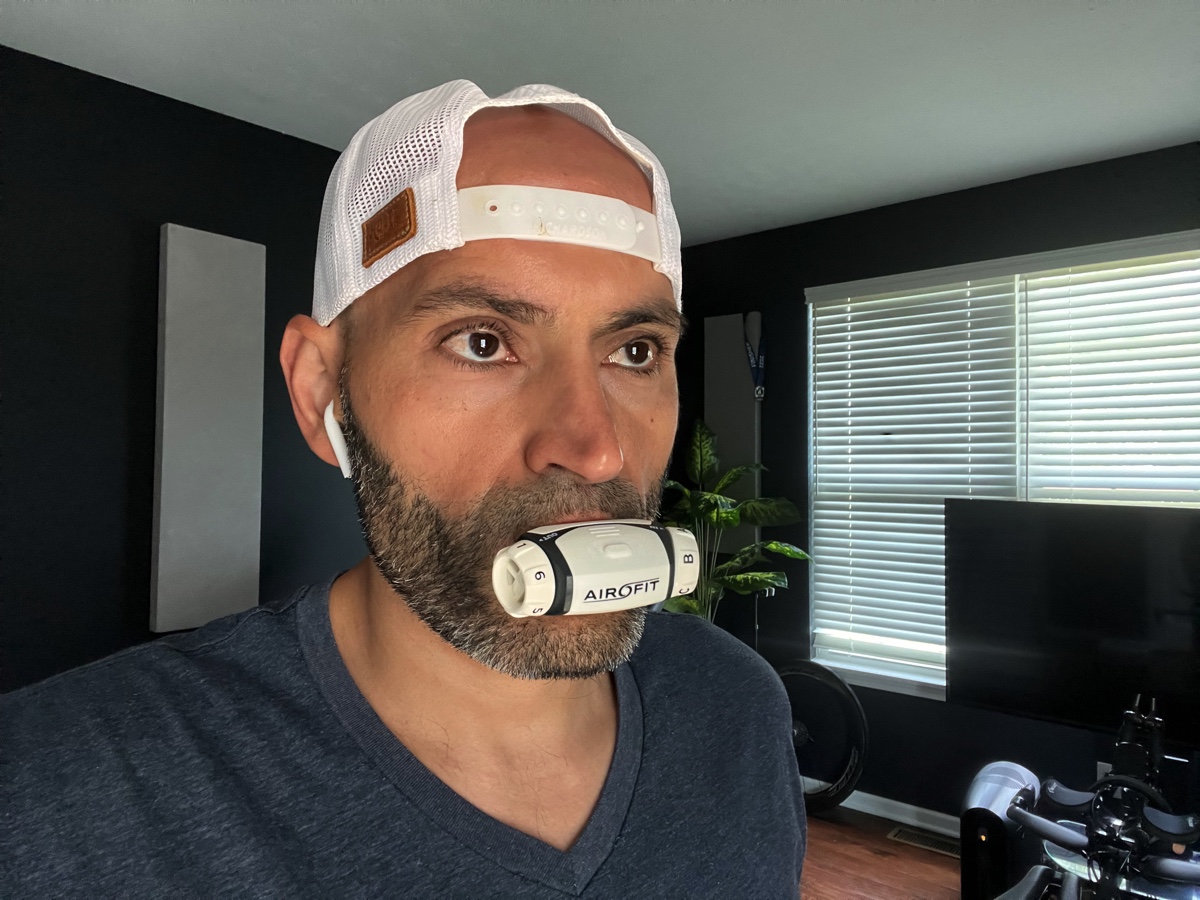
I’ve been testing out the Airofit Pro 2.0 for several months now, fitting it into my routine amidst daily rigorous swim, bike, and run training sessions. Honestly, I’ve had some difficulty attributing any noticeable improvements in my fitness levels directly to the device or its associated training program since I have been training heavily and seeing gains from training. Also, the challenge for me was maintaining consistency with the recommended daily breathing exercises; I often found myself skipping days or simply forgetting to do them. However, to the app’s credit, it does offer reminder notifications – if you have them enabled – to prompt you to complete your daily training.
Undoubtedly, there’s substantial evidence supporting the benefits of breathing exercises, particularly those involving resistance. The concept is straightforward: by restricting your breathing, you work and strengthen your respiratory muscles. Consequently, your breathing becomes more efficient, leaving more energy for your legs. The Airofit app’s diverse range of exercises and modules also offers different rhythms and intensities for breathing, removing any guesswork from your training. Although it may sound easy to inhale to your full capacity or empty your lungs completely, having a visual cue in the app makes this a more achievable task. Also, Airofit includes audible instructions for each step, allowing for a smooth, easy to follow session.
It’s worth noting, though, that research suggests the most noticeable improvements from using a device like this are typically seen in sedentary or less fit individuals – likely not the primary demographic of my readers here.
Given the $349 price tag for the device itself, plus the additional $7 monthly app subscription, the Airofit Pro 2.0 certainly falls into the premium category. If you’re already a highly trained athlete engaged in daily cardiovascular training, this might not be the best way to invest your money for further fitness gains. You might find that money is better spent on some aero equipment, or better running shoes for your next race rather than on trying to improve your breathing. However, for those more casual exercisers, or gym goers who want to enhance their breathing efficiency without compromising time spent on their next bench press or squat session, then by all means opt for the Airofit Pro 2.0.
And with that, I’ll wrap things up. Thanks for reading!
Some resources that support the benefits of breath training for your reading pleasure:
- Daily ‘breath training’ can work as well as medicine to reduce high blood pressure
- Influence of Inspiratory Muscle Training on Ventilatory Efficiency and Cycling Performance
- Effect of respiratory muscle training on exercise performance in healthy individuals
- Inspiratory muscle training improves cycling time-trial performance and anaerobic work capacity but not critical power


